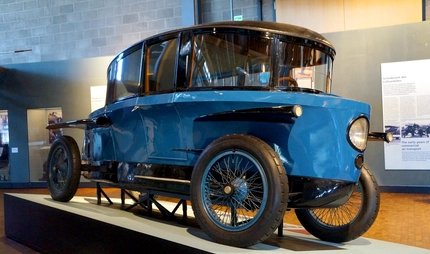
The Veterinary School’s Anatomical Theatre (Tieranatomisches Theater)
The oldest educational building in the capital
It’s the 1800s, and animal cadavers were being dissected before inquisitive veterinary students’ eyes. Today, the Animal Anatomy Theatre presents exhibitions and research results. The imposing lecture theatre primarily serves as a stage for applied science: students from Humboldt University present their research findings here. The impressive auditorium serves as a stage for the most recently applied science. Humboldt University students are invited to showcase their research findings, and the museum also works with artists, film-makers and institutions to create modern exhibitions, events and lectures. Impressive acoustics have even led the venue management team to organise concerts and recitals in the theatre.
The Tieranatomisches Theater: a theatre of applied science
This 18th century neoclassical gem exudes the charm of the leafy area it resides in. Having been built for research purposes in the control of animal diseases and then being used for the training of veterinarians, the venue is renovated in 2012 and re-opened to the public. Today, the Hermann von Helmholtz Zentrum für Kulturtechnik works with artists, students and institutions in presenting special exhibitions. Expounding on the idea that science should be available to all, a tour of the Tieranatomisches Theater begins in the entrance hall and continues through many rooms, each of which is packed with animal skeletons, photographs and other artefacts pertaining to natural history and science. The permanent exhibition, "Das Tieranatomische Theater – Architecture and Science History" gives you an exciting insight into the 200-year history of the auditorium. Guided tours, cinematic experiences and listening pieces make for an interactive visit, and there are regular public lectures and events. To sit in the amphitheatre with its white-painted rows of wooden seats all pointing towards the lectern, is to sit within a piece of history. Berlin’s oldest academic facility boasts a domed roof which towers overhead, covered in paintings of humans and animals.
The permanent exhibition "Weaving of Things - Collection Showcase of the Humboldt-Universität zu Berlin" shows the connections between the university's various collections.
Highlights of the Tieranatomisches Theater
- Neo-classical architecture by Carl Gotthard Langhans.
- Berlin’s oldest surviving school.
- A fascinating blend of architecture and science.
- Science, history and art exhibitions about animal anatomy.
- Enclosed in the same campus as other architecturally important buildings.
What else is there to see in the vicinity?
A trip to the nearby Medizinhistorische Museum der Charité will complement your visit to the Tieranatomisches Theater. Journey through 300 years of medical history with its focus on the changing historical view of the human body, or enjoy one of the varied special exhibitions which look into medicine and medical history. Nearby is the Boros Collection, a fascinating art exhibition housed in a converted bunker. Once a hub of Nazi activity, the bunker now showcases the private collection of Christian Boros, consisting of international artists’ work dating from 1990 to the present day. The exhibition is only accessible on a guided tour in groups of no more than 12 guests, so be sure to book your visit in advance.
Tips for visiting the Tieranatomisches Theater
Admission is free. Take the U-bahn U6 to Oranienburger Tor. From here it’s just a short walk to the museum. Because the Tieranatomisches Theater is a functioning institution still used for teaching, it is not possible to visit every day, so check the website in advance before travelling.



